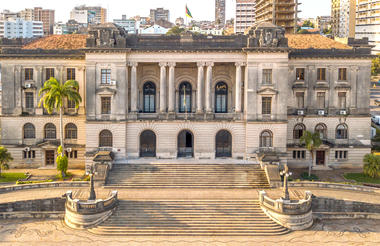Mozambique's capital, Maputo, is known for its well-preserved Portuguese colonial architecture. With its beautiful art deco architecture and its exceptional setting on a hill overlooking the glittering Maputo Bay, the city of Maputo once sparkled as the 'Riviera' of Southern Africa. Previously called Lourenco Marques, Maputo is Mozambique's largest city and home to the country's most famous harbour. It is well-equipped with a wide selection of hotels, supermarkets, restaurants, a vibrant cultural scene and open-air sidewalk cafes lining the streets. Visitors can stroll down the jacaranda-lined streets of the Baixa neighbourhood in the Old Town, explore the Praca da Independencia square, discover the Neoclassical City Hall and view the unique bronze-domed Maputo Railway Station. Other popular activities include visiting Catembe and Ponta d'Oura's beautiful beaches as well as snorkelling and scuba diving in the warm Mozambican waters.



Clustered along the western edge of Inhaca Island, the village of Inhaca takes its name from Tsonga chief Nhaca, a local leader famed for sheltering shipwrecked Portuguese sailors centuries ago, and now functions as the island’s bustling heart. Its centre hums with a small market, general dealers, lively bars, and simple eateries where fresh local seafood is served. At low tide, families wade into tidal flats to gather shellfish while colourful fishing dhows rest on sandy shores nearby. From here, local guides organise snorkelling and scuba diving trips to reefs like Coral Gardens and Santa Maria Wall, where underwater gardens teem with marine life. Elevated guesthouses overlook the shore to the south, contrasting with campsites near the runway to the north. Functioning as the practical base for exploring the island, Inhaca connects visitors to beaches, forests, and mangroves through walking trails, tuk-tuk routes, and boat trips.



